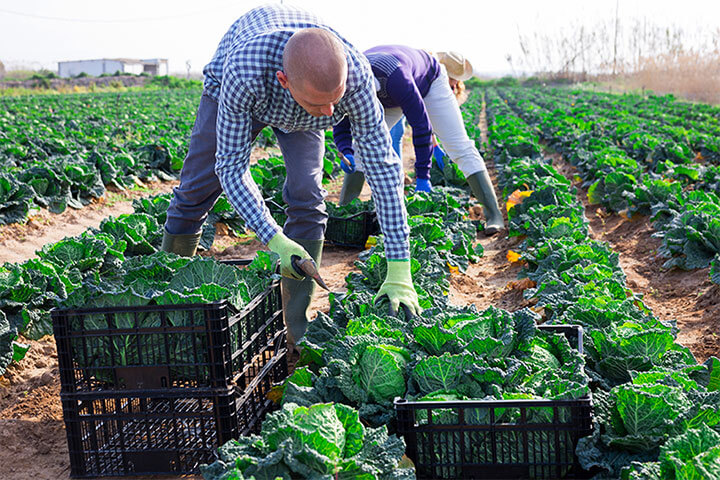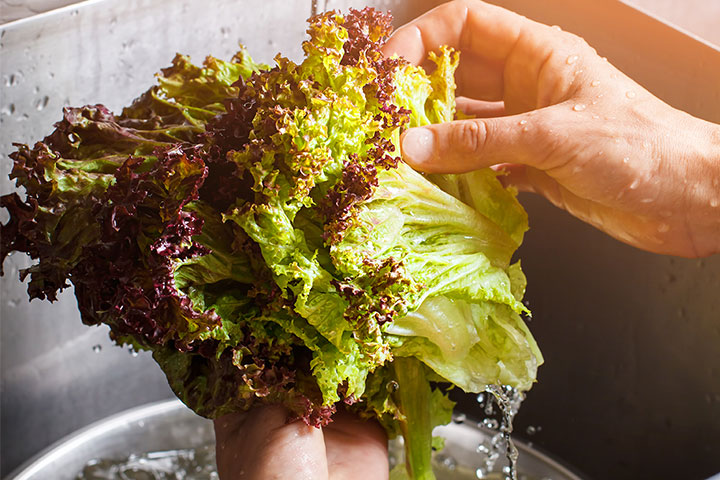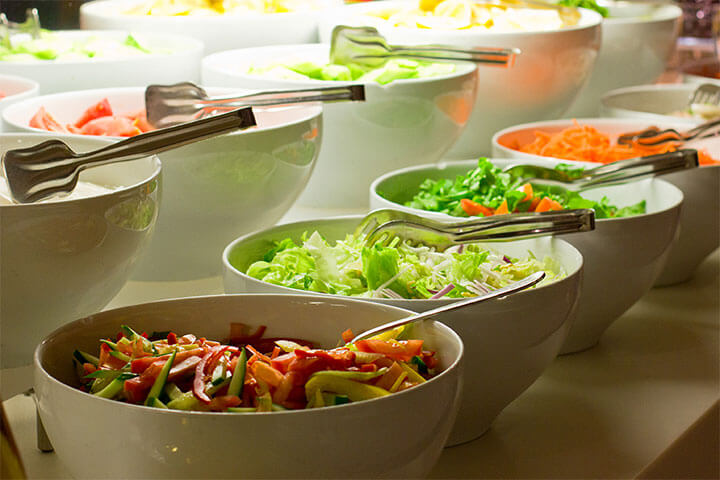Leafy greens are a staple ingredient in most commercial kitchens and restaurants. While they play an important role in balanced nutrition, they can also be the culprit for foodborne illness.
Strong BOH processes will help mitigate this risk, however, studies have shown that inconsistent back-of-house leafy green handling practices tend to be commonplace. For that reason, here are five tips every back-of-house (BOH) staffer should know. This information will elevate the quality of your produce and help prevent foodborne illness from being traced to your restaurant.

1. Which Vegetables Are Considered Leafy Greens?
Vegetables that fall into the “leafy greens” category includes plants such as lettuce, escarole, endive, cabbage, arugula, chard, and kale. Leafy greens can arrive at your restaurant whole, raw, prepackaged, or ready-to-serve.
Herbs such as fresh basil or cilantro are not classified as leafy greens.
Pre-cut, washed, and packaged leafy greens are considered by the FDA to be Potentially Hazardous Food (PHF) and Ready-to-Eat (RTE) foods. Conversely, items such as whole heads of lettuce or cabbage are considered Raw Agricultural Commodities (RAC) and are not considered to be potential health hazards.

2. What Differentiates RAC From RTE Leafy Greens?
Raw Agricultural Commodities (RAC) and Ready-To-Eat (RTE) foods are useful to distinguish in a professional kitchen because they involve different levels of care and handling.
RTEs — such as pre-washed, packaged salad — are categorized as a potentially hazardous food (PHF) because when they are chopped, more of the plant is exposed including its internal fluid. This exposure acts as a doorway for pathogens and provides an ideal location for bacterial growth. With this in mind, RTEs must be held at specific temperatures throughout the farm to fork lifecycle. However, RACs do not require immediate refrigeration during travel or while in storage.
Oftentimes, RTEs do not require additional washing. When in doubt or just for extra precaution, staff should always check the label’s instructions upon delivery and follow manufacturer recommendations. RACs, however, require normal washing and sanitation procedures following their journey from farm to BOH.
To summarize, once leafy greens are cut, the opportunity for foodborne illness increases.

3. What Is the Connection Between Traceback and Romaine Lettuce?
Traceback is an integral part of food safety and a useful way to investigate foodborne illness. Foodservice managers who keep records of where and when their leafy greens were sourced from, make it easier for investigators to track down and eliminate the source of contamination.
Traceback efforts have also led researchers to discover that amongst all leafy greens, the biggest offender of foodborne illness is romaine lettuce. Scientists aren’t certain why romaine is the most vulnerable to contamination, though some support the theory that the more delicate the lettuce leaf, the easier it is for bacteria to develop. Delicate leaves break easily, allowing access into the plant.
Others have noted that plants like kale with heartier leaves contain thiocyanates. This naturally occurring compound may offer advanced protection against pests and bacteria. Also contributing to romaine lettuce’s chart-topping numbers may simply be because it is one of the most popular lettuces.

4. Do Leafy Greens Require Temperature Control?
Temperature control is key in warding off bacteria from your restaurant. Without a doubt, this is especially important when it comes to potentially hazardous food items like bags of RTE salad.
The US Food & Drug Administration (FDA) recommends refrigeration lower than 41ºF (5ºC) for cut leafy greens during all phases of its farm-to-fork journey including. The temperature of your greens should be verified with a probe thermometer for assurance:
- During transportation
- Upon arrival
- During storage or display
RACs such as whole heads of cabbage do not require refrigeration for safety throughout its journey, but we do recommend the following:
Fresh cut leafy greens prepared in your commercial kitchen should follow the same refrigeration procedures as RTE leafy greens. Often, fresh cut heads of lettuce or cabbage will spoil faster than its factory-processed counterparts.

5. When Should I Refuse Shipments of Leafy Greens?
Providing the best in customer service means keeping ingredients that don’t meet your standards out of your professional kitchen. There are many valid reasons for refusing shipments of leafy greens when they arrive at your establishment. Consider refusing your supplier’s leafy greens in the following circumstances:
- Proper temperatures were not maintained during travel. Cut leafy greens must be kept at temperatures lower than 41ºF (5ºC). Refusing a delivery if you aren’t certain that items were stored in a temperature-controlled space is a food safety practice supported by the FDA.
- Leaves that look bad or show signs of damage should be refused upon arrival. Not only is their appearance not appetizing, the damage and decay means there is a greater chance of contamination. This includes leaves that are broken or have lesions, or are wet, wilted, moldy, or rotten.
- If the shipment smells or tastes bad, refuse it.
- Some items require product labels. If your shipment arrives without the necessary product labels, it is fair to refuse it.

We know you want to present your customers with the freshest ingredients. If your staff struggles to maintain expert quality control when receiving shipments of leafy greens, we recommend documenting the procedure and what issues to check for. Have your staff refer to this document during the arrival of leafy greens so that everyone agrees with what is acceptable and what isn’t.
Leafy-Green Love Supports the Health of Your Business
Leafy greens are an essential part of our menus. Understanding how and when to refuse supplier shipments, how to prevent contamination, and the importance of differentiating between RTEs and RACs is essential for safety, as well. Have you ever refused a shipment of produce? Let us know why in the comments.



